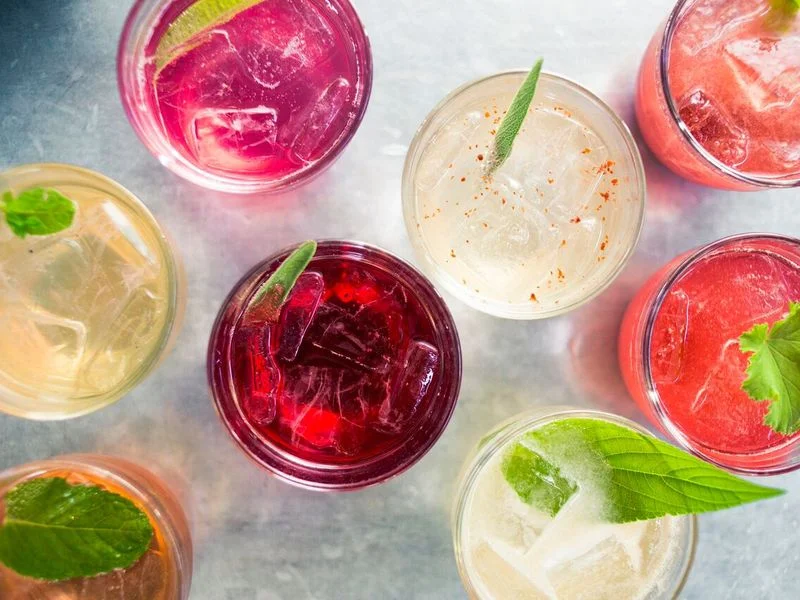Lior Lev Sercarz's father, grandfather and great-grandfather were diamond dealers, but sparkly rocks weren't young Lior's thing. Instead, he dug his hands into the fragrant world of spices. Raised in Israel, the classically trained chef first found culinary inspiration while working at a trout-smoking factory. At the end of a long day, he'd grill fish for the crew and grab whatever he had on hand—garlic powder, chiles, paprika—to enhance the meal. He's come a long way since that muddy pond, but he still recalls those early days of grabbing fistfuls of rosemary and lavender in Galilee.
Read MoreWhen people talk about Clinton Street Baking Company, they’re usually talking about two things: pancakes and waiting in line. Visitors and locals come for the restaurant’s blueberry pancakes, and for good reason: they’re crispy-edged and fluffy, made with teensy-tiny wild Maine blueberries. Other options include bananas and walnuts, and chocolate chunks. The restaurant goes through 250 pounds of those blueberries per week, or 13,000 pounds per year, plus 416 gallons of New York maple syrup. During pancake month, in February, they sell almost 2,000 orders a week.
Read MoreBrooklyn's food scene is unstoppable. First Smorgasburg, a hit food festival in the area's trendiest neighborhoods, and now New York’s first museum devoted to food.
The Museum of Food and Drink, or MOFAD, will open the doors to its first exhibit on Tuesday. Mashable got a sneak peek at Flavor: Making It and Faking it.
New apps and services, from Resy to Cover, are changing the experience of dining out. Hospitality is a $5 trillion industry. No surprise there: We all eat, sleep, and travel. For that reason, technology companies have long coveted a piece of each one of those businesses. Uber and its peers are rethinking transportation. Airbnb and HotelTonight are rethinking hotels.
Read MoreI’m in a pristine kitchen, the kind where the stainless steel workstations are wrapped in linen to reduce noise. It’s clinically calm. Surrounded by men and women in white, I listen intently as their boss—a pink-cheeked ex-soccer player who looks like a linebacker—discusses their latest assignment: to create compelling dishes without the use of their go-to fat of choice. Butter.
Read MoreCoffee or arugula without a hint of bitterness — it may sound improbable, but sugar has found a new rival in mushrooms.
With several patents issued, MycoTechnology, a Denver startup, is using proprietary strains of mushrooms to remove the bitterness from foods and improve the flavor of all manner of products, from coffee to tea to chocolate.
It might have been any over-the-top Manhattan dinner party: a penthouse setting where several dozen carefully chosen, accomplished guests enjoyed artisanal cocktails, a four-course tasting menu prepared by up-and-coming chefs and a live dance performance. But this was no ordinary over-the-top party. It was an open house — albeit a very exclusive one.
Read MoreLike the drummer in a band, Corey Waldron—an ex-barista from Fort Wayne, Indiana—was tired of hiding behind a hulking metal instrument. So, he set out to create a new type of espresso machine, one that is hidden from view. Modbar, short for modular brewing systems, is a set of three individual chrome "taps" (think of a bar with beer taps) that sprout up from a counter and dispense espresso, steamed milk and pour-over coffee. What’s new is that the once manual barista job now pairs with slick electronic components under the counter that can be endlessly programmed to control details like pressure, temperature, cleaning and more.
Read MoreInspired by the popular, pricey and controversial coffee known as kopi luwak—coffee beans plucked from animal dung—Camille Delebecque has co-launched a company focused on enhancing the flavor of coffee beans using natural fermentation techniques in the lab. Last Wednesday, Afineur launched a Kickstarter campaign to raise funds to produce "cultured coffee," and hit its target goal in just six hours.
Read MoreThe tomato-based ketchup you know and love is a wholly American invention. But before it was made from tomatoes, which are native to the Americas, ketchup-like sauces made from offbeat ingredients like walnuts, oysters and pickled fish brine were common across Asia.
Read MoreTimothy Burke describes his trick for making spring rolls with rice paper, which is notoriously difficult. With a bit of translation from his mom, the shy eight year old said, You dip them in a wide plate of hot water, and turn them, then take them out of the water and place them on another plate before they get soft. Then you add the vegetables and roll it up fast. Easy.
Read MoreLike kale, kombucha has hit maximum mainstream. Funky-hued bottles of the probiotic fermented tea line shelves at Whole Foods, and even fine dining restaurants are getting into the game of making custom blends.
Read MoreIt’s a sunny day at Windfall Farms in upstate New York, and Morse Pitts, the owner, is trying to explain to me one of the many reasons his microgreens cost so damn much: every shoot sold comes from a single seed. A sunflower shoot can take up to three weeks to mature. New seeds are planted twice a week for the duration of winter—which, this past year, lasted four and a half months. To keep their white plastic bins stocked for the three days a week they’re at Manhattan greenmarkets, they planted over 750 pounds of seeds—for just one of their dozen-plus offerings. And a fifty-pound bag of sunflower seeds costs $185.
Read MoreKernza’s arrival has been a long time coming. The new grain variety from the Land Institute is derived from an ancient form of intermediate wheatgrass, a perennial that is actually a distant relative of wheat. And there’s a widespread team of researchers hoping their work will pave the way for an entirely new form of food.
Read MoreMORE THAN 200 million people on this planet worry about the same invisible villain: their blood glucose. High, low, just right? For many of these diabetics, it’s a medical version of Goldilocks that entails four or more blood-test finger pricks a day and a jab in the thigh with a needle full of insulin at mealtimes. It’s a drag and I should know—I was diagnosed as a type 1 diabetic 30 years ago. At the time my father thought to himself, “She’ll be cured by the time she’s in college.” I’m now well beyond college age, and not only do I still have diabetes but I still use (basically) the same hardware and medications.
Read MoreWhen it comes to the great outdoors, there are two types of people: those who prefer to hold a spatula and those who feel more comfortable carrying a glass. For the spirit of this story, let's all be the ones with the glasses. Because really, what's a grill without a cold beverage?
Read MoreThe California drought has officially gotten scary. Further complicating the situation is the fact that almost 80% of California's water supply goes to the state's agriculture needs, which in turn goes toward feeding the entire planet. (Did you know that California produces 80% of the world's almonds?) A recent LA Times infographic shows just how much water is used to produce one plate of food (968 gallons). There is also an interactive version, where you can create different plates of food to understand their water impact.
Read MoreIn a city that birthed Shake Shack, it may come as a surprise to find someone with the balls to open another casual burger joint. But if you're a family of farmers with the most transparently-sourced beef in town, then maybe there's something to the idea. Grazin' Tribeca is the second diner serving meat from Grazin Angus Acres, a 500-acre farm in Ghent, New York. Its grass-fed and finished beef is the only beef served both there and at a Grazin' in Hudson, NY, the only two 100% Animal Welfare Approved (AWA) restaurants in the world.
Read MoreThat old jar of dill pickles in the back of your fridge—it's not doing you any favors. With such an incredible array of pickle potential at your local farmers' market (okra, beets, kohlrabi) and interesting flavors (turmeric, smoked paprika, kombu) waiting to be added to brines, why waste space with something so...pedestrian?
Read More



















